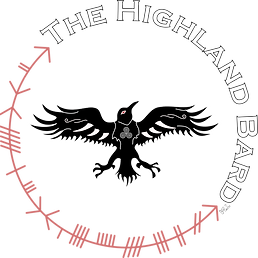There are some tantalizing and speculative possibilities regarding archaic mother goddesses reaching as far back as the Paleolithic era. That is the goddess Perchta.
The European Goddess Perchta, or the Italian witch Goddess, la Befana. Perchta’s name means ‘bright one’ which may hint at her winter solstice links as the sun is born again and begins a new cycle. Another line of thought links the origin of Perchta's name to the verb meaning ‘covered’ or hidden. In this context, there are interesting relationships to folk customs concerning masks and hiding one's identity currently including wren boys and mummers, for example. We also see some correspondence to the hidden Otherworld all around us and from where Perchta emerges.
Perchta has more than one aspect to her character. She can appear young and beautiful, as well as old and haggard. This is another representation of the dying year giving way to a new cycle after the solstice: the crone aspect of her character signifying the dying year and the youthful aspect representing the new life about to begin. As well as her physical characteristics being oppositional, so too are the results of encountering her. If you have been good throughout the year, then Perchta may leave you a piece of silver but if you have been bad, she is said to tear out your innards are fill your insides with stones and straw!
Perchta also has one swan foot, a motif we see a few times in relation to shape-shifting Goddesses. This is also quite a shamanic-type characteristic and may have been used to signal that Perchta is a much older archetype than her later cultural form suggests. Certainly, Perchta is strongly linked to the great Goddess of Northern Europe, Holda, with other commentators seeing parallels to the Goddess Diana.
The association with swans has an Irish connection, too. The obvious correspondence is with the story of The Children of Lir.
Her later association with witchcraft and the old ways goes some way to explaining why Perchta was such a thorn in the side of the Christian church with condemnations issuing forth from the 15th century at least.
Perchta is also believed to be connected to Befana, an Italian Goddess of winter who rides down chimneys bringing good fortune to those who have themselves been good and leaving coal or a stick to those who have been bad.
Although later associated with Christian characteristics and the date of the Epiphany, the historian Carlo Ginzburg compares Befana to the fairy queen, Nicnevin.
This is interesting as Perchta herself is often considered to be one the alternative leaders of The Wild Hunt, the procession of the dead and good people riding out at wintertime. It should also be said that The Wild Hunt tends to have many different procession leaders, depending upon the customs and location.
Another well regarded origin for Befana is the Roman deity Strenua, the Goddess of the New Year. Now, just to get a little bit deeper and complicated with this, there are pathways to follow from Nicnevin to Hecate, the Greek triple Goddess, who herself may be a later form of the Egyptian Goddess of birth and new life, Heqet. Others see Hecate’s beginnings with the Carian people of ancient Anatolia going back to at least 1,300 B.C.
Source: David Halpin
Image: Winter Goddess by Eran Fowler

